Approximately 52% of individuals worldwide base their purchasing choices, at least in part, on the packaging that goes beyond merely meeting health and safety regulations and also contributes positively to social and environmental causes. By utilizing an AGV fleet, businesses can propel themselves forward with a sustainable workflow, improved efficiency, increased output, and a secure working environment for all employees.
With the focus turning to sustainability, one of our clients in the paper packaging industry just completed a logistics process upgrade with automation. The factory is equipped with advanced production equipment. Their paper packaging products are widely used in industries such as food, daily necessities, electronics, toys, etc. The client has adopted the VisionNav intralogistics automation solution to improve intralogistics efficiency and optimize operational costs.
The client's project site includes two operation areas: the ground stack storage area and the lift conveyor docking area, using nine-foot pallets. The project involves the installation of six units of VNSL14 pallet stacker and the RCS(Robot Control System) 2.0. These systems will interact with the conveyor line and integrate with the upper-level ERP system, enabling automatic inbound and outbound processes for finished products.
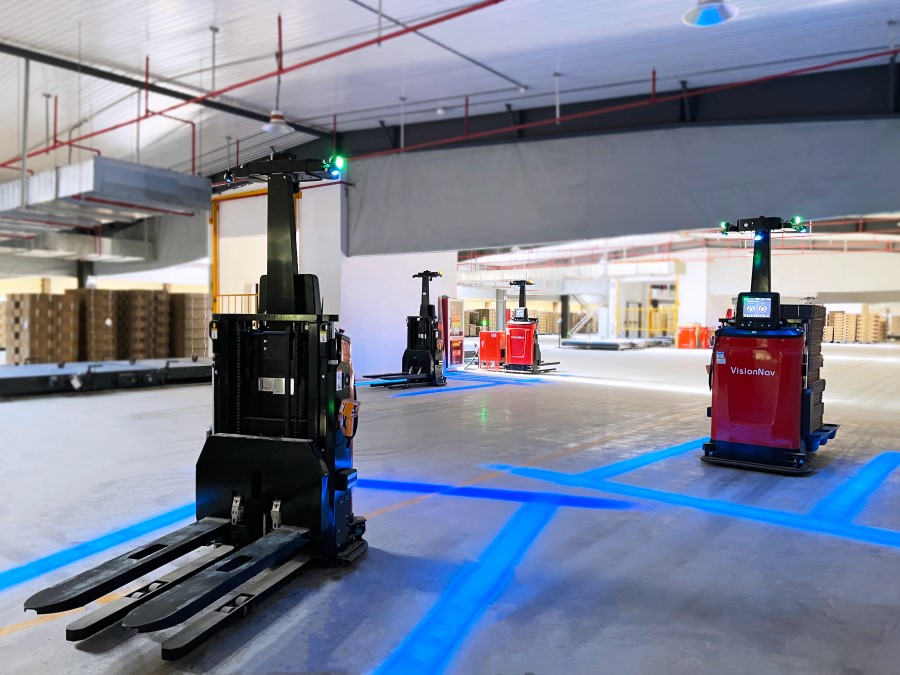
VNSL14 pallet stackers shuttle onsite
Automated Workflow
Inbound: After the paper packaging finished products are processed on the first floor, they are transported to the second floor via a lift conveyor. A scanning camera is installed at the end of the inbound conveyor on the second floor. The conveyor line's Programmable Logic Controller (PLC) interacts with the RCS(Robot Control System) 2.0. The scanning camera takes a picture of the pallet barcode and sends it to the system. The system then plans the storage location and dispatches the VNSL14 automated forklift to pick up the finished products from the conveyor line and transport them to the designated storage location in the ground stack storage area, then completes the inbound process.

VNSL14 pallet stackers work at inbound area
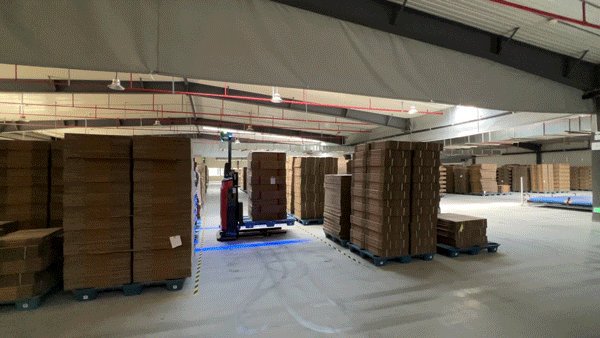
VNSL14 pallet stackers work at inbound area
Outbound: When the finished products on the second floor need to be shipped out, the ERP system issues an outbound task to the RCS2.0 system based on the outbound order. The RCS2.0 system then schedules the VNSL14 to retrieve the goods from the ground stack storage area and deliver them to the lift conveyor on the second floor for outbound.
Once the materials are transported through the lift conveyor to the first floor, and the outbound process is completed, the RCS2.0 system synchronizes the changes in the storage location and inventory status to the ERP system. This ensures that the ERP system is updated with the latest information regarding the warehouse inventory after the outbound process is finished.
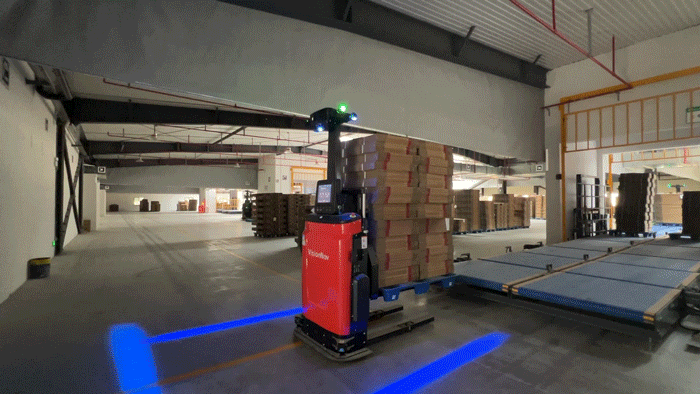
VNSL14 pallet stackers work at outbound area
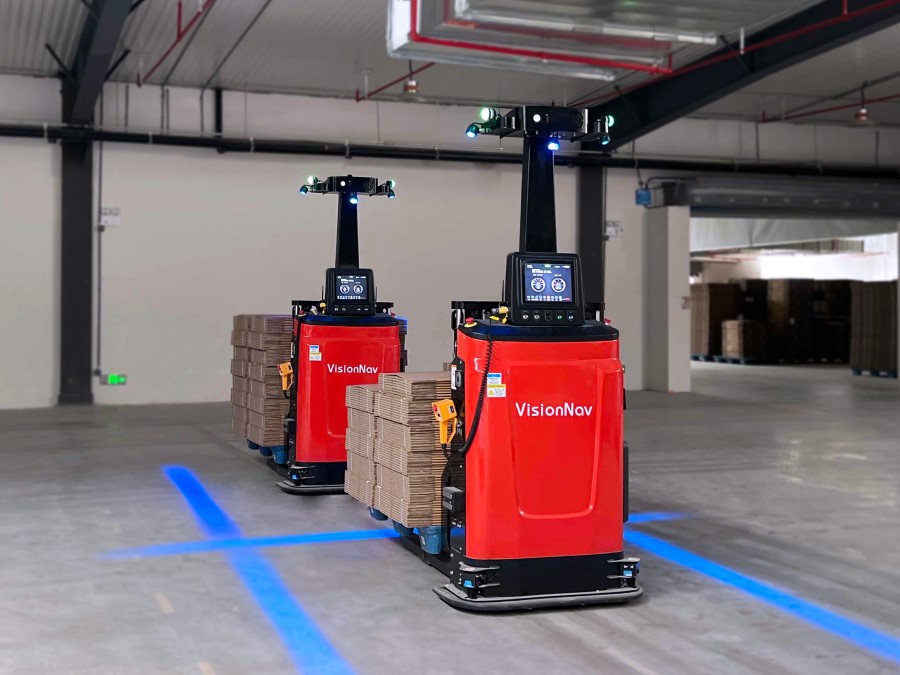
VNSL14 pallet stackers work at outbound area
Logistics Better
The VisionNav RCS2.0 system intelligently schedules all vehicles in the entire facility. It transforms individual vehicle operations into a controlled multi-vehicle traffic system through map route optimization and brake control optimization, further reducing energy consumption.
After the project went live, the customer improved the efficiency and accuracy of automatic inbound and outbound processes for finished products and saved labor and time costs. Additionally, they achieved a green and low-carbon intralogistics workflow, promoting sustainability in their operations.
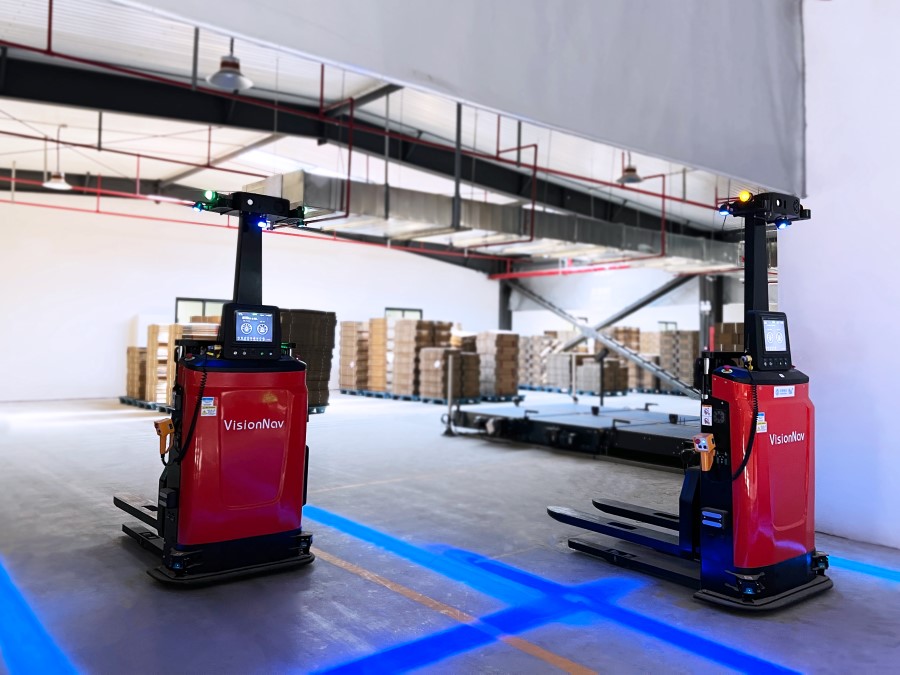
VNSL14 pallet stackers collaborate onsite
In the era of the low-carbon economy, achieving environmentally friendly and intelligent development in the printing and packaging industry has become a new demand. With the continuous strengthening of environmental policies, printing and packaging production companies are gradually seeking transformation toward green development. VisionNav has always adhered to the concept of 'green and low-carbon development and, through intralogistics automation solutions, is assisting global enterprises in achieving energy-saving and emission reduction, moving towards green and sustainable manufacturing.
About VisionNav
VisionNav® Robotics is a global supplier of autonomous industrial vehicles and intralogistics automation solutions. Based on Machine Learning, Environmental Perception, Deep Machine Learning, and Servo Control technology, VisionNav has developed nine product series for full-stack scenarios to automate industry logistics. VisionNav has served more than 30 countries and deployed 350+ projects around the globe, and partners with 50+ Fortune 500 companies, covering auto manufacturing, tire, food, petrochemical, e-commerce, 3PL, pharmaceutical, and other industries.
Media Contact
Iris Chen
xchen@visionnav.com